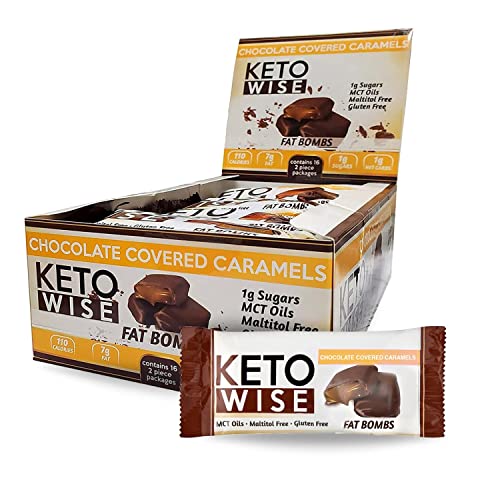This post may contain affiliate links which means I may receive a commission for purchases made through links. Learn more on my Private Policy page.







Price: $27.48
(as of Mar 26, 2023 00:05:29 UTC – Details)

Keto Wise: Your Ultimate Guide to Eating Wisely on the Ketogenic Diet
Looking to lose weight and feel great? The Ketogenic diet might just be what you’re looking for!
Ketogenic diets have been around for years but have recently become immensely popular. This low-carb, high-fat approach to eating is known for its incredible weight loss and health benefits. The diet works by forcing your body to burn fat instead of carbs for energy. Essentially, it puts your body into a state of ketosis, which is why it’s called the “Keto diet.”
But as with any diet, it’s important to approach it with knowledge and understanding. That’s why we’ve created Keto Wise, your ultimate guide to eating wisely on the ketogenic diet. In this article, we’ll explore everything from how to start the diet, the benefits and potential risks, and tips for staying on track.
Starting the Keto Diet
Before starting the diet, it’s important to understand the principles and goals of the diet. The basic idea is to keep your daily carb intake below 50 grams, and ideally around 20-30 grams. This will help to put your body into a state of ketosis. That means your body will begin to burn fat instead of glucose, which is how the diet aids in weight loss.
It’s also important to eat high amounts of healthy fats, along with moderate amounts of protein. Some of the best fat sources include coconut oil, avocado, nuts, and seeds.
Benefits and Potential Risks of the Keto Diet
The benefits of the Keto Diet are well-documented. Not only does it aid in weight loss, but it also helps to reduce the risk of chronic diseases such as heart disease, diabetes, and cancer.
However, there are also some potential risks associated with the diet. One of the most common is the “Keto flu,” which typically lasts around a week and includes symptoms such as headaches, fatigue, and nausea. You may also experience constipation due to the low intake of fiber on this diet. Additionally, those with liver or kidney problems may need to modified the diet to suit their needs.
Tips for Staying on Track
Starting the Keto diet can be challenging, but with these tips, you can increase your chances for success.
1. Plan your meals in advance: This will help you avoid temptation and stay on track with your macros.
2. Read up on keto-friendly foods: There are plenty of foods that are low in carbs, high in healthy fats and perfect for the keto diet.
3. Stay hydrated: The Keto diet can dehydrate you due to the reduction in glucose in your body. So, it’s essential to drink plenty of water to stay hydrated and help flush out toxins.
4. Make sure to get enough electrolytes: Magnesium, sodium, and potassium are essential electrolytes that your body needs. You may need to supplement your intake to make sure you’re getting enough.
5. Consider adding exercise to your routine: Exercise can help you burn more calories and stay motivated.
FAQs
Q: Is the Keto diet safe for everyone?
A: While it’s considered safe for most people, those with liver or kidney problems should consult with a doctor before starting the diet.
Q: How long does it take to see results on the Keto diet?
A: You can start seeing results in as little as two weeks, but it can take longer for some people.
Q: Can I eat fruits on the Keto diet?
A: You need to be careful when it comes to eating fruits on the Keto diet since many fruits are high in carbs. Stick with a small amount of berries and other lower-carb fruits.
Q: Can I eat carbs at all on the Keto diet?
A: The aim is to keep your carb intake below 50 grams a day. So, it’s best to avoid carbs as much as possible.
Q: How much fat should I eat on the Keto diet?
A: Aim for 70% of your daily intake to come from healthy fats.
Conclusion
The Keto diet has become one of the most popular diets to achieve weight loss and improved health. With the right approach, you can experience impressive results. Use this guide to get started and remember to stay committed to the diet. With some hard work and discipline, you’ll be well on your way to a healthier, happier you!

